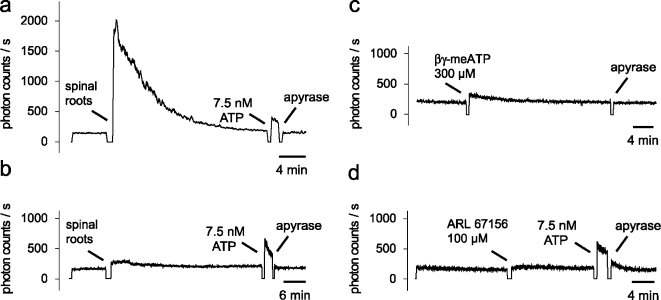Figure 1.
Baseline level of ATP in the recording chamber. a, b Four isolated rat spinal roots were added to the recording chamber filled with 400 µl of a HEPES-buffered saline and 50 µl of the ATP assay mix (arrow). The spinal roots that were recorded in (a) were squeezed at their endings with tweezers; spinal roots in (b) were transported to the organ bath by means of curved tipped forceps. Note that less mechanical stress induces less luminescence (lower concentration of ATP) in the bathing medium. In either condition, luminescence returns to the baseline level within 10–20 min. Addition of apyrase (50 µg/ml) at the end of the recording did not lower the number of photon counts/s. This indicates that the baseline level of ATP at this time is at or below the detection limit for ATP.(c, d) Possible contamination of βγ-meATP and ARL 67156 with ATP was tested in bathing media containing spinal roots. Both compounds produced only a small increase in the baseline luminescence which returned to the resting level within a few minutes (for discussion see text). The recording of luminescence in all experiments was temporarily halted when spinal roots or chemicals were added to the recording chamber

